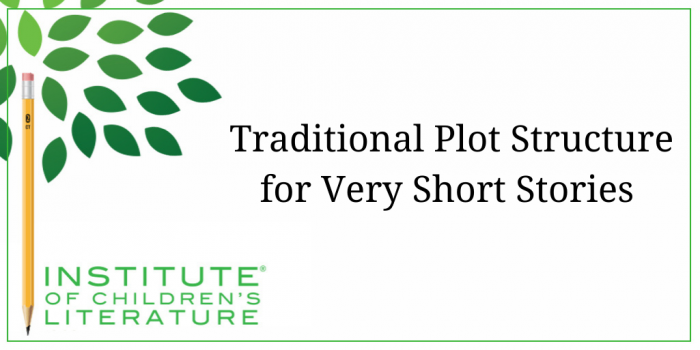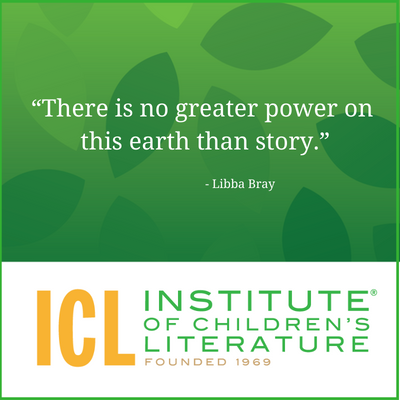1000 N. West Street #1200, Wilmington, DE 19801
© 2024 Direct Learning Systems, Inc. All rights reserved.

Stories for very young children are short. In fact, picture books these days are usually around 500 words and often well under. Stories for children’s magazines are often the same length or shorter still. This means that the word count for jumping into the story, accomplishing something purposeful, and leaving the reader with a satisfying ending are quite tight. This is one reason that picture books and stories for very young children look easy (being so very few words) but are actually truly challenging. Still, challenge can be fun as well as frustrating.
A traditional plot is sometimes described as a story with “rising action.” This simply means that the plot begins with a problem or challenge and the main character must act in response to that problem. The action does not usually result in success and sometimes makes the problem worse. Thus, the need for solution rises and of the difficulty of finding the solution rises as well. The character must act again to deal with this rising problem. For most children’s stories, this act/result pattern happens three times before the story resolves.
 Let’s look at how this happens in a traditional tale we probably all know. There is this kid who is off gallivanting through the woods when she comes to a cute cottage. As she’s tired, she decides to go inside and rest. (Without permission!) She tries taking a seat in a chair but struggles to find one that will let her rest, and even breaks one. She looks for something to eat and must try several options before she finds the one she’ll eat. And finally, she is so stuffed and tired, she decides to nap out on one of three beds, the only one she finds comfortable. (Who raised this kid?) After this, she learns an important lesson in the dangers of breaking-and-entering. But let’s look at the structure here.
Let’s look at how this happens in a traditional tale we probably all know. There is this kid who is off gallivanting through the woods when she comes to a cute cottage. As she’s tired, she decides to go inside and rest. (Without permission!) She tries taking a seat in a chair but struggles to find one that will let her rest, and even breaks one. She looks for something to eat and must try several options before she finds the one she’ll eat. And finally, she is so stuffed and tired, she decides to nap out on one of three beds, the only one she finds comfortable. (Who raised this kid?) After this, she learns an important lesson in the dangers of breaking-and-entering. But let’s look at the structure here.
We have three actions by the main character to make herself comfortable. She sits a bit, she eats a bit, she naps a bit. In each of these three, she has three challenges (seat comfort, food temperature, and bed comfort). The three main actions each lead to a story result: she breaks a chair, she eats up some cub’s porridge, and she is discovered napping by the homeowners. Interestingly enough, it isn’t until this third action that the wayward child does what she needs most to do––leave the bears’ cottage and keep running until she is safely home. It’s meant as a cautionary tale, but it’s also indicative of traditional story structure. We have problems, failed attempts at solution, and consequences of action.
Goldilocks is a traditional tale that is designed to be told in far more than 500 words. Though clever writers have managed to pair it down and variants on it have worked quite well as well, such as Goldenlocks and the Three Pirates [April Jones Prince and Steven Salerno], Goldielocks for Dinner: A Funny Book About Manners [Susan Montanari and Jake Parker], and Moldilocks and the Three Scares: A Zombie Tale [Lynne Marie and David Rodriguez Lorenzo].
There are basically two ways to succeed in writing a rising-action plot in such few words. One is to trust in the illustrator to tell their part of the story. This means not spending time on description which will be revealed in the pictures instead of the words. The other way is not engaging in any backstory that is not absolutely essential. For instance, in many longer retellings of Goldilocks, considerable time is spent with the bears, as the storyteller describes the making of the porridge (for example). But if writing a variant for a picture book, the writer might choose to stay in Goldie’s viewpoint and not bother with any of the bear backstory. The combination of these two word-count-shortening tricks are essential to telling a full plot in few words.
But what if your story is for a magazine and you cannot count on the illustrations to offer much help in the storytelling? The process is similar.
 You will still be careful to keep description pared down to only what is needed for the reader to understand. You will cut out unnecessary backstory. In other words, if we don’t need to know something, it won’t be told. For instance, in the Goldilocks story, we don’t need a litany of her past naughtiness. We don’t need to know how long the bears have lived in their cottage. We don’t need to know how far away Goldilocks lives. We don’t need a long explanation for what sent her into the woods.
You will still be careful to keep description pared down to only what is needed for the reader to understand. You will cut out unnecessary backstory. In other words, if we don’t need to know something, it won’t be told. For instance, in the Goldilocks story, we don’t need a litany of her past naughtiness. We don’t need to know how long the bears have lived in their cottage. We don’t need to know how far away Goldilocks lives. We don’t need a long explanation for what sent her into the woods.
To keep things tight, short, and necessary, you look at every single bit and ask (1) do I need it and (2) could I possibly convey this needed bit with fewer words? For instance, suppose I’ve cut out why Goldie is in the woods and I’m sticking in her viewpoint, but I still need her to sit in chairs and eat porridge and nap. So I write this:
Goldilocks pushed open the door and limped in to find a spot to sit. She saw three chairs pulled up close to the fire. One was tall and wide and horribly hard. Goldilocks did not like it at all. One was covered in ruffles and lace and other itchy bits. Goldilocks did not like it at all. One was small with a tiny pillow right on the seat. Goldilocks liked it a lot. She plunked right down and broke the chair to bits.
Now that conveys the information but it uses 83 words. Yikes! Now if I want to convey the information without the bulk, I need to trim it down. Here’s one effort:
Goldilocks walked right in. She saw three chairs. “I need to sit!” she cried. The first chair was too big and too hard. The second chair was too frilly and itchy. The third chair was perfectly comfy, until it broke to bits and dumped Goldilocks on the floor.
That cuts it down to 48 words. I could cut it even more depending on how much of the word count I can spend here. The cuts need to be carefully applied so that making it shorter doesn’t result in the story plot no longer making sense. You also don’t want the cuts to eliminate all your voice.
By understanding the structure of the story you’re creating, you will find it considerably easier to keep the word count tight. Most of the time, when the writing runs away with you in these tiny stories, it’s because the structure isn’t clear and you’re rambling a bit. One excellent way to find spots you can cut is to outline your story after it’s written to allow you to see the structure clearly.
In a traditional plot, the way you’d do that is something like this:
[Main Character] wants/needs ___________. The character [does something] which results in ____________. Because of that, the character [does a second thing] which results in ____________. Because of that, the character [does a third thing] which results in ___________. Because of the things the character has done, the situation changes (or the character changes) and the character does _______________ which results in the ending where [what happens].
Once you’ve plugged in the bits of this traditional plot structure, two things will emerge. First, you’ll see if you actually have a plot (and can change the story so that you do) and second, you will see if random things have crept in that don’t support the actual story. Then you can snip, snip, snip to cut the dross and leave the gem of a story shining. Do that, and you’ll have a stronger story in fewer words. And don’t we all like that?
Let a one-on-one mentor guide you through revisions on your next project. Take the assessment today and get paired with an instructor!
With over 100 books in publication, Jan Fields writes both chapter books for children and mystery novels for adults. She’s also known for a variety of experiences teaching writing, from one session SCBWI events to lengthier Highlights Foundation workshops to these blog posts for the Institute of Children’s Literature. As a former ICL instructor, Jan enjoys equipping writers for success in whatever way she can.
1000 N. West Street #1200, Wilmington, DE 19801
© 2024 Direct Learning Systems, Inc. All rights reserved.
1000 N. West Street #1200, Wilmington, DE 19801
© 2024 Direct Learning Systems, Inc. All rights reserved.
1000 N. West Street #1200, Wilmington, DE 19801
© 2024 Direct Learning Systems, Inc. All rights reserved.
1000 N. West Street #1200, Wilmington, DE 19801
© 2025 Direct Learning Systems, Inc. All rights reserved.
1000 N. West Street #1200, Wilmington, DE 19801
©2025 Direct Learning Systems, Inc. All rights reserved. Privacy Policy.
5 Comments